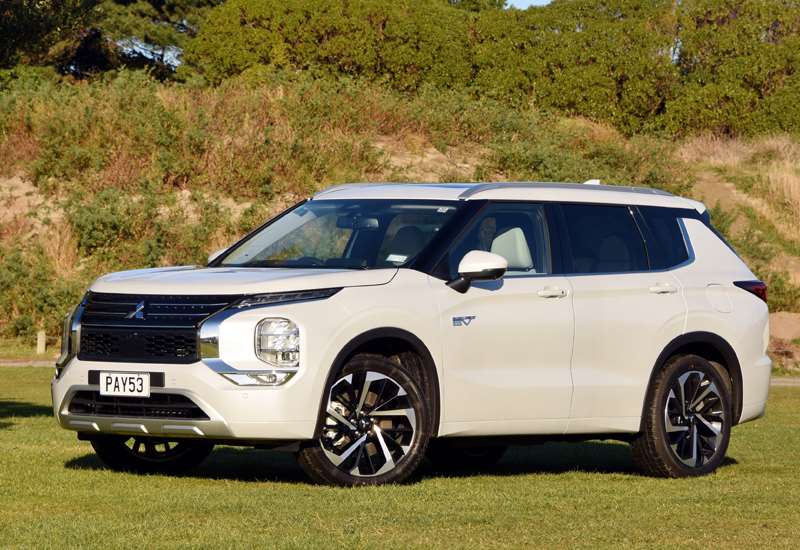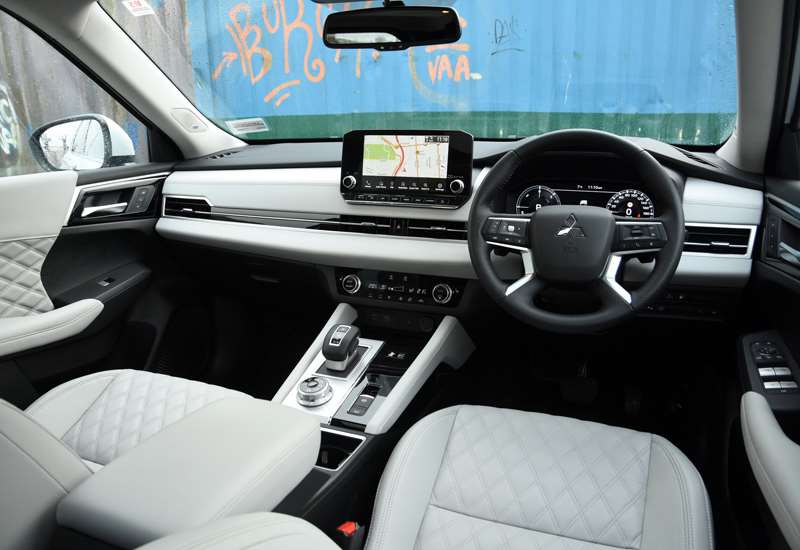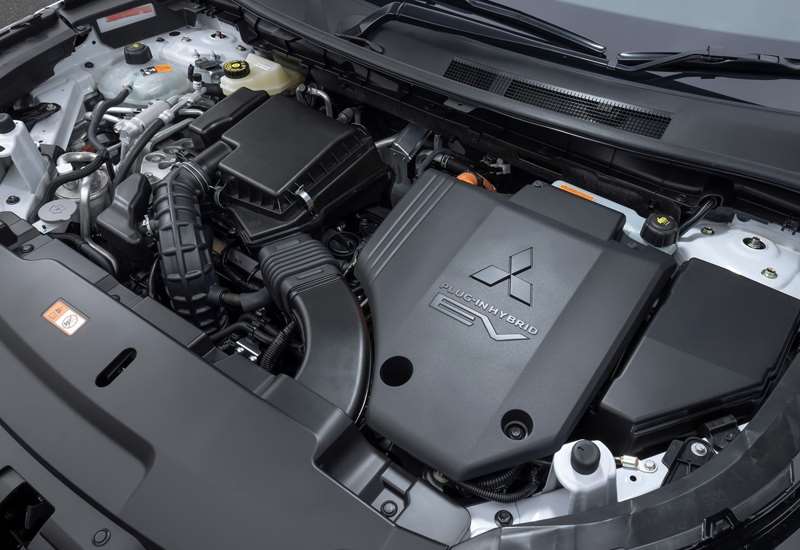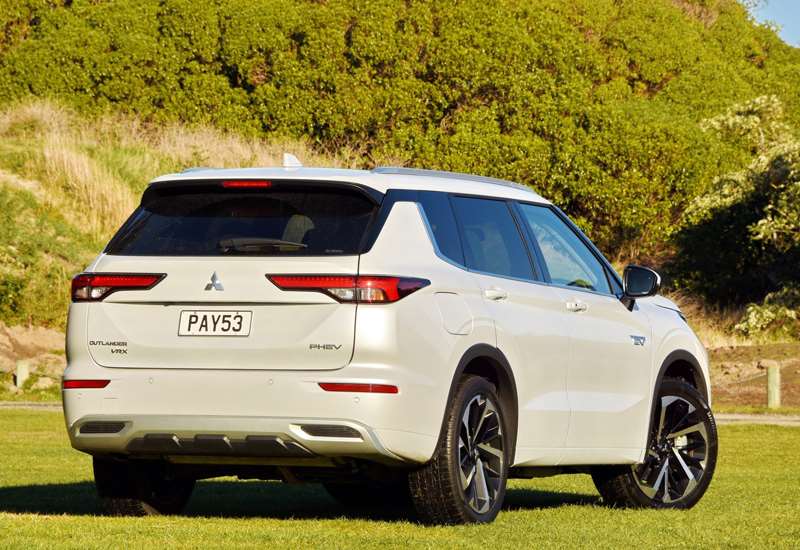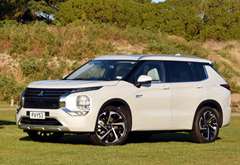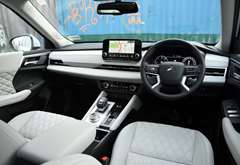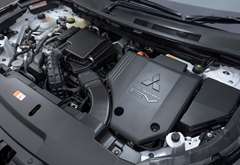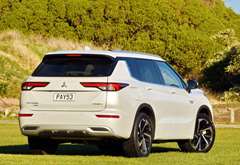An eagerly awaited plug-in hybrid has joined the conventional pure petrol variant in the latest Mitsubishi Outlander range. David Thomson checks it out.
What’s new?
It is boom time for Mitsubishi in New Zealand, the brand heading perennial market leader Toyota for new vehicle sales in the year to date, and the Outlander this country’s bestselling passenger car of 2022.
Plug-in hybrids (PHEVs) have been integral to Mitsubishi’s success, its two plug-in offerings
— the Outlander PHEV and Eclipse Cross PHEV — accounting for more than 70% of all Kiwi plug-in hybrid sales.
In the case of the fourth-generation Outlander, the success of the PHEV is a natural progression from the popularity of the equivalent vehicle in the third-generation range. That previous model, in its final form, combined a 2.4-litre petrol engine with a dual (front-rear) electric motor system, producing combined peak outputs of 157kW and 332Nm. A 13.9kWh battery pack enabled a notional electric-only range of 55km.
The same power unit configuration has been maintained this time round, but with substantial upgrades to both electric motors providing considerably more punch under battery-power alone while also lifting combined petrol-electric outputs significantly to peaks of 185kW and 450Nm. With a superior 20kWh battery pack also fitted, notional electric-only range rises to 84km.
It sits on an all-new platform featuring an improved version of Mitsubishi’s Super All-Wheel Control (S-AWC) system. All PHEV versions feature all-wheel-drive.
At first blush, the price differences between petrol and PHEV variants seem steep: the flagship VRX PHEV 4WD, for example, lists at $73,990, which is $18,000 more than its pure-petrol equivalent. However, factoring in the impact of the Government’s clean car scheme and the combination of the petrol’s $1150 fee and the PHEV’s $5750 rebate closes the price gap to $11,100.
Three plug-in Outback variants are available, the flagship VRX PHEV joined by the $66,990 XLS PHEV and $60,990 LS PHEV.
What comes as standard?
The Outlander’s active safety suite provides adaptive radar cruise control, emergency lane keeping and lane-changing assist, lane departure warning and prevention, driver attention alert, blind spot assist, forward collision mitigation (with pedestrian/cyclist detection and junction assist), rear cross-traffic alert and emergency automatic braking,
The entry-level LS Outlander features a nine-inch touchscreen and an infotainment set-up that includes a six-speaker sound system, smartphone mirroring and satellite navigation with traffic sign recognition, and parking sensors.
Unlike its predecessor, the new Outlander PHEV matches its petrol sibling in providing a third seating row at both XLS and VRX specification levels. The XLS also adds triple-zone climate control, synthetic leather upholstery, heated front seats (the driver’s power adjusting), wireless smartphone charging, rain-sensing front wipers and auto-dipping headlights.
VRX specification adds a stack of extra kit.
What does it look like?
The new Outlander is larger all round than its predecessor, with increases in wheelbase, overall length and height. Combine these gains with the boldest iteration yet of Mitsubishi’s so-called ‘‘dynamic shield’’ look about the nose, strong styling creases along the flanks and a high window line, and there is ample visual presence.
I’m a fan of the new look, especially on the VRX, which takes plenty of dress-up body kit.
What’s it like inside?
The new interior is an absolute highlight of the latest Outlander, being roomier, far more contemporary in appearance and superior in fit and finish too.
Big news for the PHEV is the addition of a third row of seats on the XLS and VRX variants.
Turning the plug-in version into a seven-seater has taken considerable design cleverness, because some of the underfloor space into which a third seating row would normally fold is required for the battery system.
For the PHEV, the third row comprises a single-piece bench seat rather than the 50:50 split set-up of the petrol seven-seater. The seat back is also thinner, to enable the arrangement to fold flat into the boot floor.
Up front, a clean-lined approach to design and the effective integration of the centre touchscreen result in a welcome lack of cabin clutter. Intuitive touchscreen functionality and seamless device connectivity signal major advances in the ICT area, as does the provisioning of a fully digital main instrument cluster.
What’s it like to drive?
Compared with its petrol counterpart, which can labour at times as its 2.5-litre petrol engine propels what is quite a big vehicle, the PHEV is a quietly confident performer. Notwithstanding the extra 400kg in weight imposed by the battery and electric motors, this is exactly as it should be given that PHEV deploys 37% more power and a mammoth 84% more torque.
For all its 185kW and 450Nm, the test car never felt subjectively quick as it gathers speed in such a smooth and unobtrusive manner there is never a sense of accelerating hard.
The various drive modes — power, eco, normal, tarmac, gravel, snow and mud — are activated via a rotary knob beside the drive selector, and adjust aspects of power delivery, steering and the intervention points of the stability systems for different conditions.
Ride quality is good and aural refinement excellent during both round town and open road driving. Steering lacks a little for feel, and while the Outlander PHEV is no sports car through tarmac twists and turns, it handles predictably and comfortably if driven with deference to its size and mass. The test car was sure-footed on gravel roads, and with 206mm of ground clearance, and snow and mud modes, it manages gentle offroading too.
Making the most of the vehicle’s electric capabilities requires mastery of a range of buttons and controls. Firstly, it is necessary to select ‘‘B’’ rather than ‘‘D’’ mode to engage the regenerative braking system, which can be adjusted for intensity via the paddle shift controls on the steering wheel; it would be much simpler in my view if ‘‘B’’ was the default selection when engaging forward motion. Once in ‘‘B’’, one-pedal driving — in which braking is controlled via the paddle shift to maximise efficiency — is easy and rewarding.
A further button, next to the drive selector, controls the extent to which electric versus petrol propulsion is determined. The two extremes of this four-stage selection fully prioritises electric power on the one hand and on the other, deploys the petrol motor to propel the car while recharging the battery.
The standard cycle economy return figure of 1.6 litres/100km is not indicative of what an owner is likely to achieve in everyday motoring; on test
Drivesouth recorded an 8.1 litre/100km return during a major one-day jaunt beyond city limits, but then managed mostly zero-emissions motoring with no petrol use in four days around town, for a final test return of 5.2 litres/ 100km.
The trick to maximising the battery-only motoring potential at minimum cost is to home-charge. With its relatively small battery, there’s really no need to install a specialised wall charger as hooking up to a standard household three-pin plug fully charges the battery in about seven hours.
If there’s a need to charge more quickly, the Outlander differs from most plug-in hybrids in that its battery can be topped up using a commercial rapid charger. I did this on test, adding 7.2kWh of charge in 20 minutes.
The cost of that commercial top up, at seven dollars, is massively more expensive than just a couple of dollars to add the same through a home charge. Either way though, the cost of recharging the battery is a lot less than the petrol needed to cover a similar distance. I’m picking that the fuel bill for covering 100km under petrol power alone will be around $25-$30 at current 91 octane pump prices, compared with about $15 for electricity via a commercial charge and five or six dollars charging at home.
Verdict
The pure petrol version is competent and contemporary, but the plug-in hybrid easily eclipses it as the shining star of the new fourth-generation Outlander variants.
